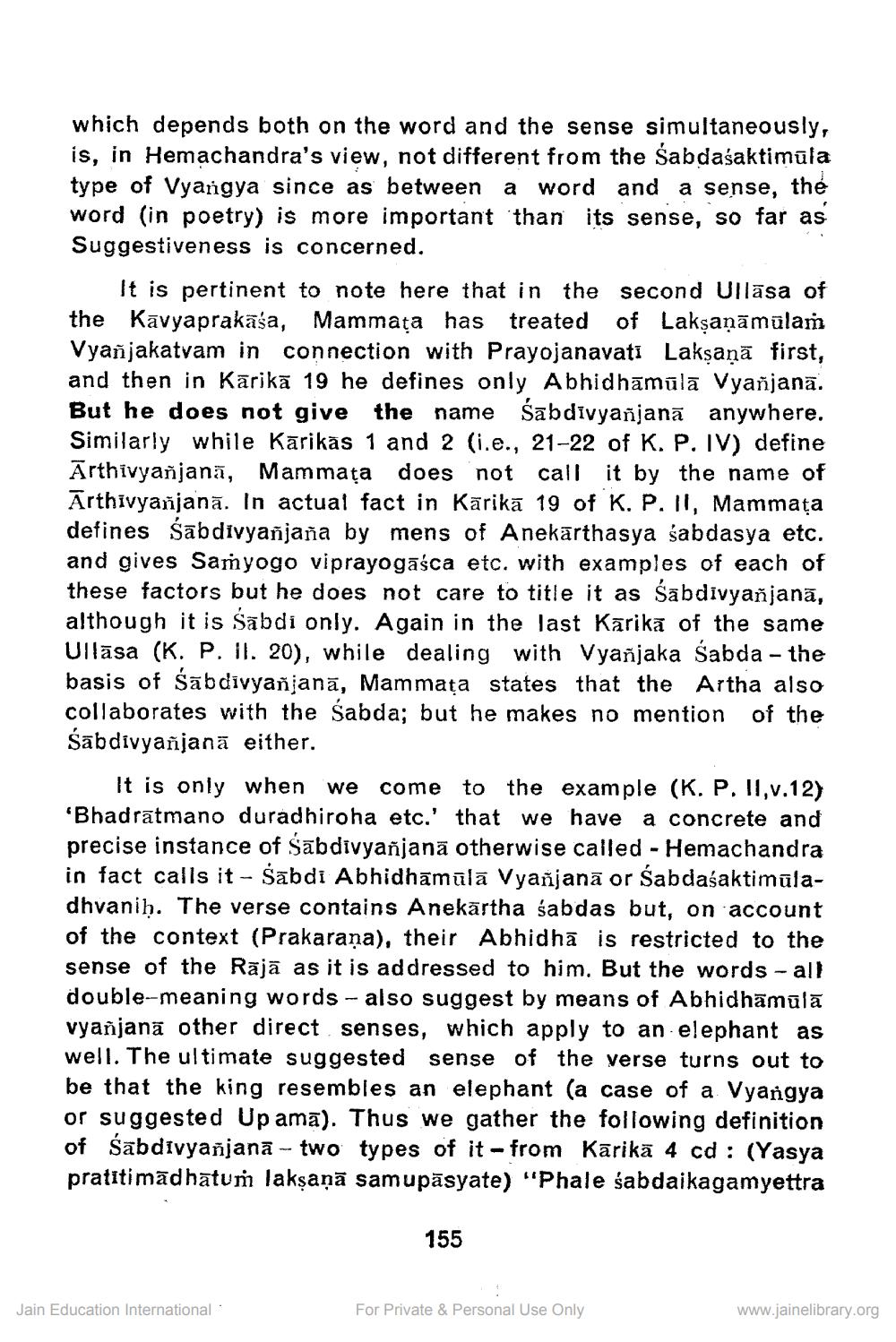________________
which depends both on the word and the sense simultaneously, is, in Hemachandra's view, not different from the Sabdaśaktimula type of Vyangya since as between a word and a sense, the word (in poetry) is more important than its sense, so far as Suggestiveness is concerned.
It is pertinent to note here that in the second Ullāsa of the Kavyaprakasa, Mammața has treated of Laksaņāmālam Vyañjakatvam in connection with Prayojanavati Lakşaņā first, and then in Kārikā 19 he defines only Abhidhāmālā Vyañjanā. But he does not give the name sabdīvyanjanā anywhere. Similarly while Karikas 1 and 2 (i.e., 21-22 of K. P. IV) define Ārthivyañjanā, Mammața does not call it by the name of Arthivyañjanā. In actual fact in Kārikā 19 of K. P. II, Mammața defines sābdivyañjaña by mens of Anekārthasya śabdasya etc. and gives Samyogo viprayogāśca etc. with examples of each of these factors but he does not care to title it as śābdivyañjanā, although it is Šābdi only. Again in the last Kārikā of the same Ullāsa (K. P. II. 20), while dealing with Vyañjaka sabda - the basis of Sābdivyañjanā, Mammața states that the Artha also collaborates with the sabda; but he makes no mention of the Šābdivyañjanā either.
It is only when we come to the example (K. P. 11,v.12) 'Bhadrātmano duradhiroha etc.' that we have a concrete and precise instance of Sabdivyañjanā otherwise called - Hemachandra in fact calls it - Šābdi Abhidhāmālā Vyañjanā or Śabdaśaktimūladhvanih. The verse contains Anekārtha sabdas but, on account of the context (Prakarana), their Abhidhā is restricted to the sense of the Rājā as it is addressed to him. But the words - all double--meaning words - also suggest by means of Abhidhāmālā vyañjanā other direct senses, which apply to an elephant as well. The ultimate suggested sense of the verse turns out to be that the king resembles an elephant (a case of a Vyangya or suggested Up amā). Thus we gather the following definition of Sabdivyanjanā - two types of it - from Kārikā 4 cd : (Yasya pratitimādhātu laksaņā sam upāsyate) "Phale sabdaikagamyettra
155
Jain Education International
For Private & Personal Use Only
www.jainelibrary.org




